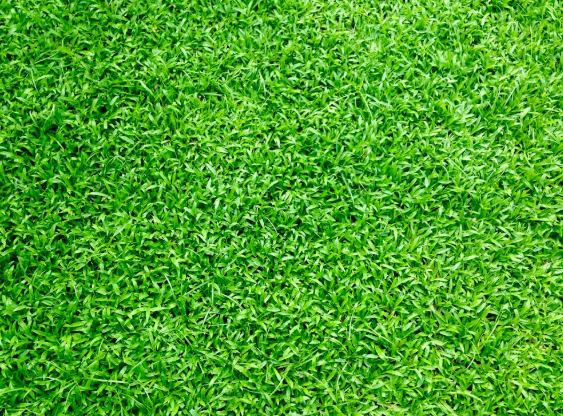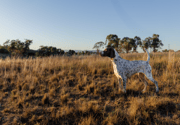
What seemed like a harmless way to keep gardens green all year round has been hiding a toxic secret beneath its plastic blades.
Across suburban streets, what once shimmered as the perfect solution to droughts and water restrictions is now being exposed as an environmental and health threat.
And one Australian council has finally decided enough is enough.
Queanbeyan-Palerang Regional Council has made headlines after announcing plans to ban artificial grass on new nature strips, citing growing evidence that synthetic turf contains dangerous PFAS chemicals and sheds harmful microplastics.
The decision has reignited national debate over a product long celebrated for its convenience—but now feared for its long-term consequences.
The toxic truth behind that ‘perfect lawn’
For years, artificial grass promised to solve Australia’s harsh gardening challenges—no watering during droughts, no mowing in the heat, and no brown patches in sight.
But recent studies have revealed the unsettling reality beneath that flawless surface.
Research suggests that every synthetic turf field may lose between 0.5 and 8 per cent of its blades each year, releasing microplastics, PFAS, and phthalates into the environment.
These chemicals don’t just vanish—they seep into soil, waterways, and possibly even our bodies.
'Artificial grass has plastic. Artificial turf has PFAS and it's not good for our stormwater.'
The health risks hit close to home
The findings are particularly alarming for older Australians.
A 2024 study revealed that people whose blood vessels contained microplastics were 4.5 times more likely to suffer a heart attack or stroke—or to die—than those without them.
Experts warn that there is no safe level of PFAS exposure, with the US EPA having recently slashed recommended limits in drinking water.
Beyond chemicals, there’s also the physical danger of heat.
Artificial turf can reach blistering temperatures of up to 88°C, posing a serious burn risk for anyone walking barefoot—or even through shoes.
This danger is especially concerning for seniors, who may have reduced sensitivity to heat or slower reactions.
Contamination that doesn’t stop at your fence
The environmental fallout doesn’t stay confined to one yard.
A single artificial pitch can release up to 300 million plastic fibres into waterways each year.
Worse still, when microplastics mix with PFAS, scientists have found they become even more toxic together.
Rain and stormwater then carry these pollutants into shared creeks, wetlands, and groundwater systems—impacting entire communities.
Studies have already detected PFAS contamination in wetlands near artificial turf fields, proving the chemicals can migrate beyond their source.
Why artificial grass is problematic for communities
- Contains PFAS 'forever chemicals' that don't break down naturally
- Sheds microplastics that contaminate water supplies
- Reaches dangerous temperatures of up to 88°C in Australian heat
- Provides no habitat for native wildlife or insects
- Eventually ends up in landfill as non-recyclable waste
What homeowners should know
For those who already have synthetic turf, there’s no immediate need to tear it up.
Queanbeyan mayor Kenrick Winchester confirmed existing installations can stay for now, though future replacements will not be allowed under the proposed ban.
Homeowners can still reduce risks—avoid walking barefoot on hot days, keep pets on shaded natural surfaces, and consider greener options for future renovations.
Landscaper Steven Waltmann said that while artificial turf might seem practical for tricky sites, there are usually better natural solutions available with thoughtful planning.
Low-maintenance natural alternatives
If your goal is a garden that looks good without constant effort, Australian natives can offer beauty and resilience—minus the health hazards.
Ground covers such as native violet, woolly thyme, pig face, and native buffalo grass thrive with little maintenance and minimal water.
For a modern twist, hardscaping ideas like permeable paving, gravel gardens, and raised beds can reduce upkeep while supporting local ecosystems.
ACT Greens spokesperson Andrew Braddock noted that these natural designs also ‘provide habitat for birds and other small animals’ while helping ‘to cool our suburbs’—a vital benefit as summers grow hotter.
A global shift in thinking
Queanbeyan-Palerang isn’t alone in rethinking synthetic turf.
The European Union has already banned crumb rubber turf as part of its crackdown on microplastic pollution.
Meanwhile, Australian environmental groups are urging a five-year moratorium on new installations.
Community surveys in Sydney’s Inner West showed that 63 per cent of residents opposed synthetic turf projects, reflecting rising public concern.
As evidence mounts, more councils may soon follow suit—recognising that what once seemed convenient now carries invisible costs for health and the planet.
The council will consult with residents before finalising the ban, offering locals a chance to understand the science and help shape greener, safer alternatives for their suburbs.
What This Means For You
Queanbeyan-Palerang Council’s move to ban artificial turf on new nature strips comes after growing evidence of PFAS and microplastic contamination linked to synthetic lawns. Studies have shown that these materials don’t just pollute the environment—they also pose health risks, with research connecting PFAS and microplastic exposure to serious medical conditions. On top of that, fake turf can reach scorching temperatures of up to 88°C, creating dangerous burn risks during Australia’s brutal summers.
For homeowners who want easy upkeep without the hazards, natural native plants and clever hardscaping provide safer, low-maintenance alternatives that keep gardens beautiful and environmentally friendly. It’s a timely reminder that sometimes the ‘simple’ option comes with hidden costs—and rethinking our outdoor spaces could protect both our health and the planet.
Queanbeyan-Palerang’s move to ban artificial grass isn’t the only case where councils are rethinking synthetic surfaces. Similar concerns about heat, safety, and toxic runoff have already prompted changes in other public areas. One well-known playground recently made headlines after local authorities acted swiftly to protect the community from these same risks.
Read more: Local government applies sudden changes in this famous playground. Why?
Queanbeyan Council artificial grass ban — ABC News reports that Queanbeyan-Palerang Regional Council plans to ban artificial turf on new nature strips due to concerns over PFAS contamination and microplastic pollution.
https://www.abc.net.au/news/2025-10-16/queanbeyan-council-artifical-grass-ban/105894880
Increasing evidence of risks from PFAS and microplastics in synthetic turf — STEP discusses how synthetic turf contains PFAS and microplastics, adding to existing problems like excessive heat and habitat disruption.
https://www.step.org.au/index.php/item/728-increasing-evidence-of-risks-from-pfas-and-microplastics-in-synthetic-turf
Why Is Artificial Turf Bad for Athletes and Children? – Million Marker — Highlights studies showing that each synthetic turf field may shed up to 8% of its plastic blades annually, releasing microplastics, PFAS, and phthalates into the environment.
https://millionmarker.com/blogs/blog/toxic-synthetic-grass
Submission: PFAS Forever Chemicals and Artificial Turf – Climate Action Merribek — Cites research linking microplastics in blood vessels to a 4.5-times higher risk of heart attack, stroke, or death.
https://climateactionmerribek.org/2024/11/27/submission-pfas-forever-chemicals-and-artificial-turf/
Position Statement on the Use of Artificial Turf Surfaces — The Institute for Exposomic Research notes that the US EPA recognises no safe level of PFAS exposure and has tightened limits for drinking water.
https://mountsinaiexposomics.org/position-statement-on-the-use-of-artificial-turf-surfaces/
Turf Wars: Where is the grass greener? – PlantingSeeds — Reports that artificial turf can reach up to 88°C in hot weather, posing serious burn risks, and documents calls for a five-year moratorium on new installations.
https://www.ps.org.au/articles/turf-wars-where-is-the-grass-greener
The Turf is Artificial, But the Harm is Very Real | Clean Water Action — Warns that artificial turf can exceed 160°F (around 70°C) in summer, with heat penetrating shoes and causing burns.
https://cleanwater.org/2024/09/16/turf-artificial-harm-very-real
PFAS in artificial turf: the grass isn’t greener on the artificial side — Fidra reports that a single artificial pitch can lose up to 300 million plastic fibres each year, and when combined with PFAS, they become even more toxic.
https://www.fidra.org.uk/chemicals-pollution/pfas-in-artificial-turf-the-grass-isnt-greener-on-the-artificial-side/
Turf Wars: Where is the grass greener? – PlantingSeeds — Notes that community surveys in Sydney’s Inner West found 63% of residents opposed synthetic turf projects due to environmental and health concerns.
https://www.ps.org.au/articles/turf-wars-where-is-the-grass-greener
Have you noticed any issues with synthetic lawns in your area—or found natural landscaping ideas that work better in Australia’s harsh climate?







